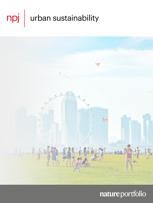Urban Studies - High impact books and journals
Leading the way in the field of urban studies, planning, urban geography, spatial science, design and architecture. Springer publishes high impact research in sustainable cities, resilience, urban governance, urban regeneration, smart urban technologies, food in cities, urban ecology, urban health, housing and urban transport.
Today, cities are home to 54% of the world’s population, and by the middle of this century that figure will likely rise to 66%. As urban becomes the reality for most of the population, urban issues become central to researchers worldwide. Cities need to be part of a solution towards better communities and a sustainable urban future. Inspired by SDG 11 and the prominence of urban topics in our lives, Springer aims to engage communities as well as government and stake-holders with ground-breaking research that brings about change and a sustainable urban future.









